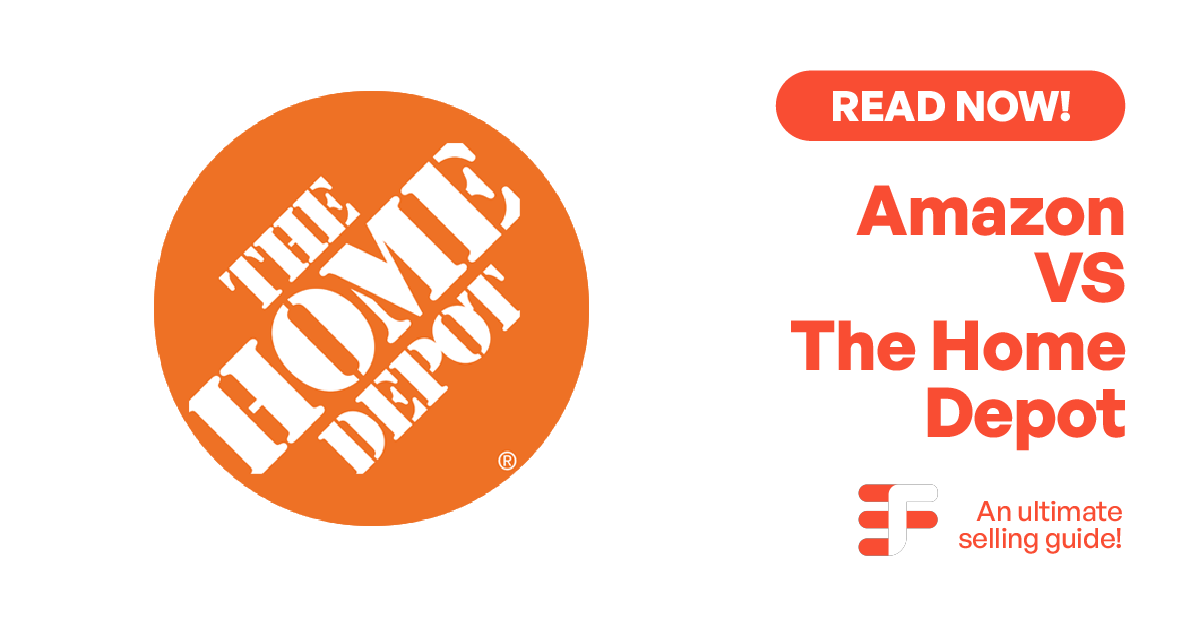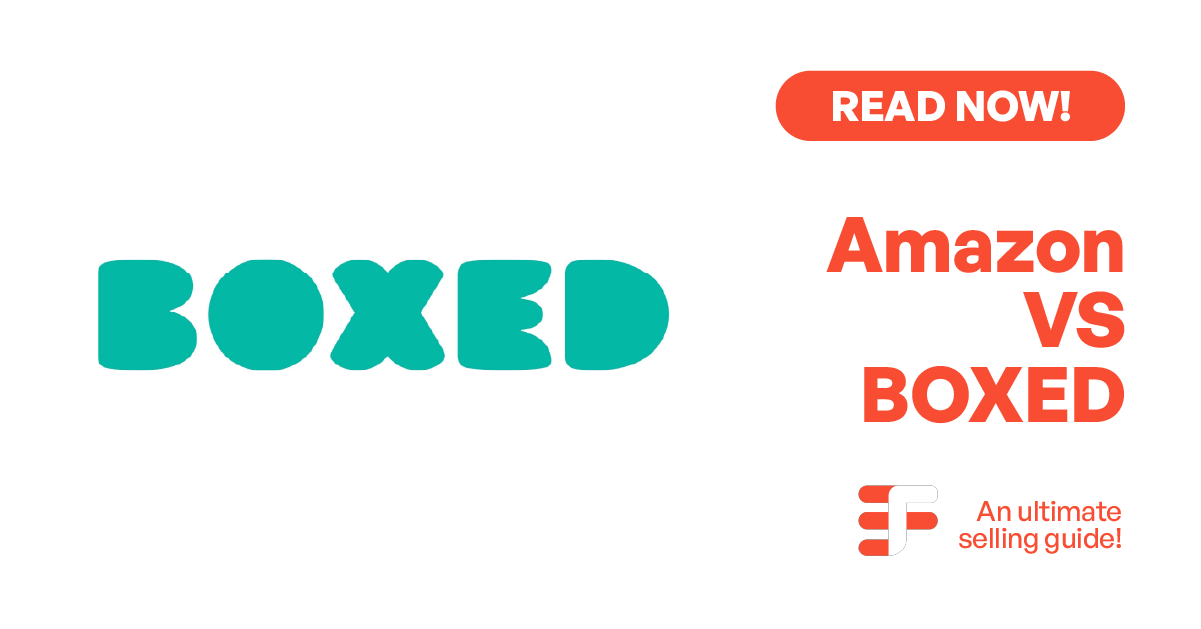Choosing the right platform to sell your products is a crucial decision that can impact your business’s growth and success. Amazon and Home Depot are two popular choices, each catering to different seller needs. Amazon, with its vast customer base and global reach, provides unmatched visibility for sellers looking to scale quickly.
The platform’s flexibility allows sellers to offer products across a wide array of categories, from electronics to clothing, which can lead to a higher volume of potential buyers. With its advanced advertising tools, such as Sponsored Products, sellers can optimize their presence for better exposure. Additionally, Amazon’s Fulfillment by Amazon (FBA) service allows for easier logistics, as it takes care of storage, packing, and shipping.
On the other hand, Home Depot, known for its trusted reputation in the home improvement sector, offers a more targeted audience ideal for niche products like tools, appliances, and building materials.
Home Depot’s focus on the home improvement industry means sellers can tap into a more specific customer base looking for high-quality, specialized products. While its audience might be smaller compared to Amazon’s, it can lead to higher conversion rates for sellers offering products that cater to this market. Home Depot also provides advertising through its Retail Media+ platform, which helps increase product visibility within the home improvement space.
Table of Contents
ToggleOverview
Amazon
Amazon is a global e-commerce giant that offers sellers a vast and diverse customer base. With over 300 million active customer accounts worldwide and millions of daily visitors, it provides unparalleled exposure to businesses of all sizes. Sellers benefit from tools like Fulfillment by Amazon (FBA), which handles logistics, customer service, and shipping, as well as the Seller Fulfilled Prime (SFP) option for those who want to manage fulfillment themselves while still offering Prime benefits.
Amazon’s marketplace is highly competitive, requiring strong product differentiation and optimized listings to stand out. Its extensive analytics and advertising options help sellers refine strategies for better results. Additionally, Amazon allows sellers to create branded storefronts to establish a unique presence.
Home Depot
Home Depot is a leading retailer specializing in home improvement, catering to a more focused and loyal customer base. It offers a seller platform suited for businesses dealing in tools, appliances, building materials, and related products.
Sellers benefit from Home Depot’s strong brand reputation and customer trust, which often lead to higher conversion rates for relevant categories. The platform prioritizes quality and targeted inventory, ensuring less competition compared to broader marketplaces. With options for direct shipping and store pick-up, Home Depot provides flexibility to meet customer preferences.
With options for direct shipping and store pick-up, Home Depot provides flexibility to meet customer preferences. Home Depot Pro Xtra also offers loyalty perks to commercial customers, enhancing B2B opportunities.
While it lacks the global reach of Amazon, it’s an excellent choice for sellers looking to connect with a dedicated audience in the home improvement sector.
Product line (Amazon)
Amazon boasts one of the most extensive product lines in the e-commerce world, offering everything from electronics, fashion, and beauty to groceries, home essentials, and niche items. This vast diversity attracts a wide audience, giving sellers the opportunity to reach millions of potential customers across various categories. Its flexible structure allows both small businesses and large brands to list products, making it ideal for scaling and diversifying inventories.
| Amazon Product Categories | Examples |
| Electronics | Smartphones, Laptops, Headphones |
| Fashion | Clothing, Shoes, Accessories |
| Home Essentials | Kitchenware, Bedding, Furniture |
| Beauty & Personal Care | Skincare, Makeup, Hair Tools |
| Groceries | Packaged Foods, Beverages, Snacks |
| Books & Media | Novels, E-books, Music |
| Sports & Outdoor | Gym Equipment, Camping Gear |
| Automotive | Car Accessories, Tools, Tires |
| Toys & Games | Board Games, Puzzles, Action Figures |
| Niche Products | Handcrafted Items, Collectibles |
Product line (Home Depot)
Home Depot specializes in home improvement and DIY products, offering a focused range of categories tailored to homeowners and contractors. Its product line includes tools, appliances, building materials, and gardening supplies, ensuring sellers can cater to a dedicated audience. The platform’s emphasis on quality and utility makes it a trusted choice for buyers seeking durable and reliable products in these categories.
| Home Depot Product Categories | Examples |
| Tools | Power Drills, Screwdrivers, Wrenches |
| Appliances | Refrigerators, Washers, Microwaves |
| Building Materials | Lumber, Cement, Drywall |
| Gardening Supplies | Plants, Soil, Fertilizers |
| Plumbing | Faucets, Pipes, Water Heaters |
| Lighting & Electrical | Bulbs, Switches, Ceiling Fans |
| Paint & Decor | Wall Paints, Wallpapers, Shelves |
| Outdoor Living | Patio Furniture, Grills, Fire Pits |
| Flooring | Tiles, Hardwood, Carpets |
| Storage & Organization | Cabinets, Storage Bins, Closet Systems |

Business Models of Amazon and Home Depot: Detailed Guide for Sellers
Amazon operates as a global e-commerce marketplace, combining a direct-to-consumer model with a third-party seller ecosystem. Here’s everything a seller needs to know:
-
Marketplace Structure
Third-Party Sellers: Amazon’s marketplace allows independent sellers to list their products, creating a competitive and diverse platform. As a seller, you retain control over pricing, inventory, and product listing details.
Amazon Retail: Amazon also sells products directly to consumers, often competing with third-party sellers. This creates both opportunities and challenges for sellers, as you may need to differentiate your products to stand out.
-
Fulfillment Options
Fulfillment by Amazon (FBA): Amazon handles storage, shipping, returns, and customer service on behalf of sellers. This service allows you to focus on sales and marketing while leveraging Amazon’s logistics network. However, it comes with fees based on storage and fulfillment volume.
Fulfillment by Merchant (FBM): You manage storage, shipping, and customer interactions directly. This option provides more control but requires robust logistics management.
-
Revenue Streams and Fees
Fees: Amazon charges referral fees (a percentage of the sale price), fulfillment fees (if using FBA), and monthly subscription fees for professional accounts. Additional fees may apply for advertising and premium listing services.
Advertising: Sellers can leverage Amazon’s pay-per-click (PPC) ads to increase product visibility, driving traffic to their listings.
-
Product Diversity
Amazon’s platform is suitable for a wide range of products, from electronics and apparel to niche items like handmade goods or collectibles. Sellers benefit from a global audience, but competition is high, requiring optimized product listings and competitive pricing.
-
Analytics and Tools
Amazon provides detailed analytics on sales performance, customer behavior, and advertising effectiveness. These insights help sellers refine strategies and maximize profitability.
-
Customer Trust and Loyalty
Amazon’s brand reputation and services like Prime (free, fast shipping for members) enhance customer loyalty. Sellers can benefit from this trust, as buyers are more likely to purchase from a platform they know and trust.
-
Scalability and Global Reach
With access to international markets, sellers can scale their businesses rapidly. However, this requires understanding Amazon’s regional policies, taxes, and shipping requirements.
-
Product Diversity
Private Labeling and Brand Registry: Sellers who want to sell under their own brand can take advantage of Amazon’s Brand Registry, which offers protections, better access to analytics, and enhanced marketing options for private label products.
Amazon Handmade: For artisans and sellers of custom or handcrafted products, Amazon has a separate marketplace, Amazon Handmade, providing a unique opportunity for niche products.
Home Depot
Home Depot operates as a specialized retailer, focusing on home improvement and DIY products. Here’s an in-depth look at its business model:
-
Retail and Marketplace Structure
Direct-to-Consumer Model: Home Depot sources products directly from manufacturers and sells them to consumers in physical stores and online. Sellers can partner with Home Depot to supply their products for resale.
Third-Party Selling: While Home Depot is not a traditional marketplace like Amazon, it allows select third-party suppliers to sell products through its platform. This model is more exclusive, requiring sellers to align with Home Depot’s product standards and audience.
-
Product Categories and Niche Market
Home Depot specializes in tools, appliances, building materials, and gardening supplies, making it ideal for sellers in these categories. Its focus on home improvement ensures a loyal customer base seeking quality products for DIY or professional projects.
-
In-Store and Online Integration
Buy Online, Pick Up In Store (BOPIS): Customers can order products online and pick them up in-store. As a seller, this means aligning inventory with Home Depot’s logistics to ensure seamless delivery to stores.
Product Demonstrations: Home Depot’s in-store model allows for hands-on customer experiences, benefiting sellers who offer innovative or high-quality products that require demonstration.
-
Revenue and Fees
Home Depot typically purchases products from suppliers at wholesale prices, reselling them at retail value. Sellers must negotiate pricing and terms directly with Home Depot.
While there are no traditional marketplace fees, sellers may incur costs for meeting Home Depot’s quality standards, logistics requirements, and compliance regulations.
-
Brand Reputation and Target Audience
Home Depot’s trusted reputation in the home improvement sector helps sellers reach a focused and loyal audience. Unlike Amazon’s broad appeal, Home Depot targets a niche market, ensuring higher conversion rates for relevant products.
-
Seller Support and Requirements
Home Depot works closely with suppliers to ensure quality control and alignment with its brand image. Sellers must meet rigorous standards, making it essential to have consistent product quality and efficient logistics.
-
Localized Focus
While Amazon has a global reach, Home Depot focuses on North America, catering to customers in the U.S., Canada, and Mexico. This localized approach allows sellers to tap into a dedicated market without the complexities of international logistics.
Marketing Strategies
Sponsored Brands and Display Ads
In addition to Sponsored Products, Sponsored Brands and Sponsored Display Ads are effective tools to drive brand awareness and sales. Sponsored Brands allow sellers to showcase multiple products at the top of search results, while Sponsored Display Ads can target customers both on and off Amazon, helping to increase visibility across various platforms.
Amazon Influencer Program
The Amazon Influencer Program allows sellers to collaborate with social media influencers to promote their products. Influencers can create personalized storefronts and share affiliate links, helping sellers reach new audiences and drive sales through trusted recommendations.
Amazon Prime Day and Lightning Deals
Taking advantage of Amazon Prime Day and Lightning Deals can significantly boost sales. These time-sensitive offers attract millions of shoppers looking for discounts, creating urgency and enhancing product visibility.
Home Depot
Seasonal and Local Promotions
Home Depot’s marketing strategies drive both in-store and online traffic by capitalizing on regional trends and local events. Sellers can join seasonal promotions such as Black Friday, spring sales, and local DIY workshops, aligning their offerings with community interests and boosting product visibility.
Digital Advertising and social media
Beyond traditional advertising, Home Depot leverages targeted social media campaigns and sponsored content on platforms like Instagram and Facebook. These initiatives help sellers reach home improvement enthusiasts who actively seek inspiration and product recommendations online.
Loyalty Programs and In-Store Engagement
Programs like Pro Xtra offer exclusive rewards that foster customer loyalty, while in-store demonstrations and expert-led workshops provide hands-on product experiences. This direct engagement builds trust and reinforces product benefits.
Educational Content
Creating informative DIY guides and video tutorials further differentiates your offerings, positioning your products as essential tools for successful home improvement projects.
Reporting and Analytics for Amazon
Amazon provides robust analytics tools for sellers through Amazon Seller Central. The platform offers detailed reports on sales performance, traffic, and customer behavior, allowing sellers to track key metrics and optimize their listings. Sellers can view product performance by category, time frame, and even customer demographics.
Amazon also provides insights into competitor performance, which can help you understand market trends and adjust your pricing or marketing strategies. Regularly analyzing these reports helps sellers make informed decisions about inventory management, advertising budget, and product listings, ultimately improving profitability and sales efficiency.
Home Depot
Home Depot offers reporting tools through its Retailer Hub, where sellers can track sales performance and customer interactions. Analytics provide insights into popular product categories, conversion rates, and customer purchasing behavior. Sellers can also monitor how their listings perform in comparison to competitors on the platform. Home Depot’s tools focus on improving inventory management and aligning offerings with customer demand. Detailed reporting also includes data on shipping times and customer feedback, helping sellers fine-tune logistics and customer service. By analyzing these insights, sellers can optimize product listings and improve visibility within Home Depot’s marketplace.
Amazon Account Creation
Creating an Amazon seller account is straightforward.
- Sign Up on Amazon Seller Central: Visit the Amazon Seller Central website and click on the registration option to begin the process.
- Enter Essential Business Information: Provide your business name, email address, tax identification number, and bank account details as required.
- Select Your Seller Account Type: Choose between an Individual or Professional seller account based on your expected sales volume.
- Complete Verification and Setup: Follow the on-screen instructions to verify your information and finalize the account creation process.
Home Depot
To sell on Home Depot, you must first apply to become a vendor through the Home Depot Supplier Hub.
- Apply via the Home Depot Supplier Hub: Visit the Home Depot Supplier Hub to begin your vendor application.
- Submit Business Details: Provide your company’s legal name, contact information, and specify the product categories you wish to sell.
- Application Review: Wait for Home Depot to review your submission and grant approval if you meet their criteria.
- Access and List Products: Once approved, log in to the platform to list your products and start selling.

Factors to Consider When Choosing a Platform
Target Audience:
Understanding your target audience is crucial when choosing between Amazon and Home Depot. Amazon’s customer base is broad and global, appealing to a wide range of industries, while Home Depot caters specifically to the home improvement sector. If your products align with DIY, tools, or appliances, Home Depot offers a more focused audience.
Product Type:
Consider the type of products you sell. Amazon is ideal for a diverse range of products, from electronics to apparel, while Home Depot is better suited for products related to home improvement, gardening, tools, and appliances. Selling products that match a platform’s niche can significantly improve your success.
Competition:
Amazon’s marketplace is highly competitive, with millions of sellers, requiring sellers to stand out with optimized listings and competitive pricing. Home Depot, while not as crowded, focuses on specific categories, which may offer a better chance for differentiation, especially in niche home improvement areas.
Fees and Costs:
Both platforms charge fees, but the structure varies. Amazon has seller fees, fulfillment costs (if using FBA), and advertising expenses, which can add up quickly. Home Depot generally has fewer fees but requires sellers to meet specific inventory and logistics standards, which may also come with costs. Consider your margins and budget when selecting a platform.
Scalability and Growth Potential:
Amazon provides a more scalable platform for sellers looking to expand globally. With its worldwide reach, FBA services, and advertising tools, it offers significant growth opportunities. Home Depot, though more localized, can be highly effective for sellers focused on the North American market, particularly in the home improvement sector.
Branding & Customer Trust:
Assess how each platform aligns with your brand’s image. Amazon’s competitive environment may require significant differentiation, while Home Depot’s strong reputation in home improvement can enhance credibility for relevant products.
Conclusion
Choosing between Amazon and Home Depot depends on your product type, target audience, and business goals. Amazon offers global reach and scalability, while Home Depot caters to a specialized, home improvement-focused audience. By evaluating factors like fees, competition, and growth potential, sellers can select the platform that best fits their needs and maximize their success.
FAQs
1. Which platform is better for selling home improvement products?
Home Depot is ideal for selling home improvement products, offering a focused audience of DIY enthusiasts and professionals.
2. Can I sell internationally on Amazon?
Yes, Amazon offers international selling options, allowing you to reach customers worldwide through its global marketplace.
3. What fees does Amazon charge to sellers?
Amazon charges referral fees, fulfillment fees (if using FBA), and additional fees for advertising services and premium listings.
4. Is Home Depot suitable for small businesses?
Yes, Home Depot allows small businesses to partner with the platform, especially if they sell home improvement products.
5. How does Home Depot’s marketing strategy differ from Amazon’s?
Home Depot focuses more on seasonal promotions and in-store events, while Amazon relies heavily on digital advertising, product listings optimization, and FBA services.
6. What payment cycles and timelines can sellers expect?
Amazon typically disburses payments every 14 days based on sales performance and account status. Home Depot’s payment cycles vary by negotiated contract terms established during onboarding.
7. How do inventory management tools compare?
Amazon’s Seller Central features real-time tracking, forecasting, and integrated analytics for inventory management. Home Depot offers inventory tracking through its Retailer Hub, with sellers often managing additional aspects independently.














